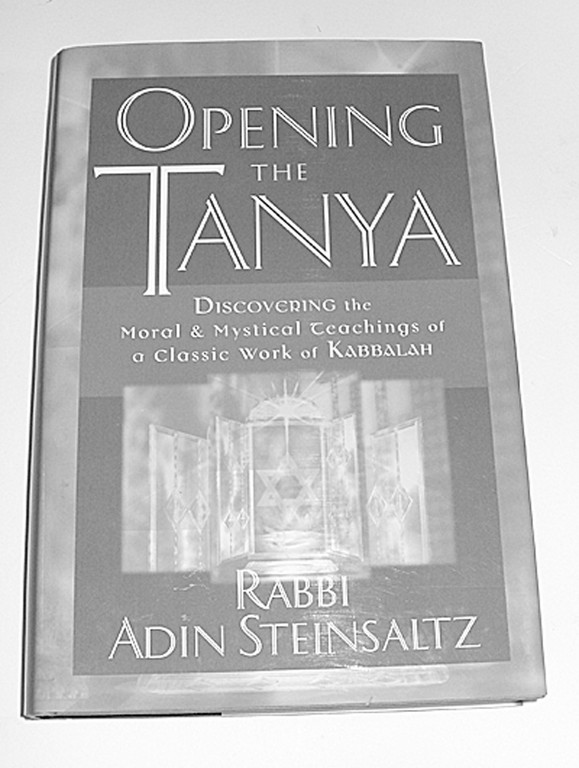The Kosher Bookworm: The Baal HaTanya legacy today upon the bicentennial of his yahrtzeit
This past Sunday marked the bicentennial anniversary of the yahrtzeit of the Baal HaTanya, Rabbi Scheneur Zalman. Among his most lasting literary works was the Tanya, perhaps the most definitive foundational work of Chabad chasidus, as well as one of the most influential of Judaism’s literary works of that era. Yet among his interpreters, each saw different teachings and theological meanings in his writings in the Tanya.
According to one of the premier contemporary commentators of the Tanya, Rabbi Adin Steinsaltz, “At first glance, the Tanya seems to affect the style of an ordinary book of mussar, practical advice intended to direct people in the path of G-d’s worship and of self-perfection. In fact, it takes an original approach to the basic issues of self-improvement, applying the principles of Hasidism to reveal the root causes of human failings and to devise comprehensive solutions.”
In contrast, Rabbi Eliyahu Touger, in a correspondence to this writer over five years ago, wrote the following observation:
“Tanya was never considered part of Mussar per se. It was – is – studied by almost all Chasidic groups, not only Chabad. For example, Viznitz has certain chapters in its core ethics curriculum. While it was officially shunned by almost all Lithuanian yeshivos, many of their greats, e.g., Rav Eliyahu Dessler, obviously studied it and used it as a basis for their work. Rav J. B. Soloveitchik talks extensively of studying it clandestinely, being caught by his father, and then being tested by him on its content.”
By further contrast, we have an extensive essay by Rabbi Lord Jonathan Sacks, entitled, “Alienation and Faith: Between Tanya 32 and The Lonely Man of Faith,” wherein he attempts to contrast the theological presentments of both ideologies. He further adds to this religious kaleidoscope the theological role of Maimonides, as well as a brief cameo appearance by T. S. Eliot.
This essay by Rabbi Sacks is among the most complicated and intellectually daunting that I have ever encountered. While I found it a challenge, I would strongly suggest that you wait a while so as to devote your reading of this work for a later part of your life’s experience.
Lastly, may I reprise a suggestion of three years ago of Rabbi Nechemia
Polen’s essay, “Charismatic Leader, Charismatic Book: Rabbi Schneur Zalman’s Tanya and His Leadership,” that can be found in “Rabbinic and Lay Communal Authority” [Yeshiva University Press, 2006] edited by Suzanne Last Stone and Robert S. Hirt.
In this study, Rabbi Polen, best known for his groundbreaking study on the Aish Kodesh, HY”D, makes the following extremely interesting historical observation that places the Tanya in a very interesting historical perspective.
“Likkutei Amarim / Tanya is one of very few works of early Hasidism that was actually written by the nominal author and brought to publication in the author’s lifetime and under his direction. It is also one of the very few works of early Hasidism that, rather than conveying its ideas in the form of occasional homilies linked to Biblical texts or the festival cycle, presents a sustained exposition and makes a highly structured argument. While the special character of Tanya has long been recognized, the compositional strategies and the developmental unfolding of the book have not been sufficiently grasped.”
In his conclusion, Rabbi Polen makes note of the following rather detailed observation that merits your careful attention:
“As the foundational work of this religious movement, Tanya achieved enormous success and has been of inestimable influence. It must be recalled, however, that the initial purpose of Tanya was not the promulgation of mystical doctrines, much less the teaching of mystical techniques or practices, but the stratification and regimentation of the Hasidic community and the assignment of appropriate roles.”
In summing up this week’s essay, let me conclude with the following tribute by Rabbi Adin Steinsaltz from his introduction to his commentary on the Tanya:
“This is a book in which the incidental ideas, as well as the supporting chapters surrounding the central theme, are no less important than the main topics. The more one reads this book, the more one discovers illuminating thoughts and ideas, a comprehensive outlook on life, insight into the structure of Jewish history, and moral guidance on countless problems. This short book encapsulates an entire philosophy and guide to life.”
To date, Rabbi Adin Steinsaltz’s Tanya commentary in English runs to three volumes, encompassing the first thirty seven chapters of this sacred work. They deserve your patronage and study.

 61.0°,
Mostly Cloudy
61.0°,
Mostly Cloudy 







